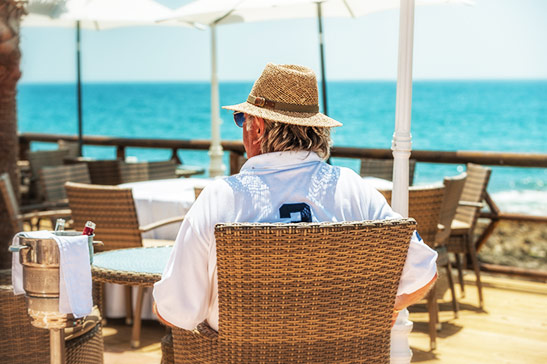
As the saying goes: “Don’t go out in the sun in January or August without a hat!” Sage advice for any expat sun-worshipper this summer.
As the sun sets on the month of July, the most significant change for many as we move into August is the promise of a well-earned beach holiday and the opportunity to disconnect from the day-to-day grind for a week or two. But delving deeper into Spanish culture and linguistics, the month of August is unique for a plethora of reasons…
Firstly, August is the month in which many fruits are at their ripest: for example grapes, figs, melons, watermelons and peaches. Therefore, in the same way that May is the month of flowers, August is known around Spain as the month of fruits.
As a result of the high quantity of ripe, succulent fruit and the need to eat this type of food in the heat of the summer sun, the expression “en agosto, sandía y melón un buen refresco son” (“Watermelon and melon are good refreshment in August”) is commonly heard.
Slightly more obscure – yet related to harvesting and grape-collecting during the month – is the expression “hacer el agosto”, which literally means “to do as in August” and whose meaning is “to line one’s pockets” or “to make a killing”.
At first glance, and taking today’s corporate culture into account, with August perhaps the least productive month of the year (Spanish companies often oblige their employees to take at least one or two weeks’ annual leave in August), the saying seems to be quite counter-intuitive.
But the expression was coined hundreds of years ago and was popularised by Cervantes during a time when agriculture was the main trading activity. In those days, having a strong harvest in August and being able to store cereals, seeds and grapes would set you up for a lucrative September.
Other expressions are based on Spain’s climate or meteorological phenomena around this time of year. One saying is “en agosto y en enero no tomes a sol sin sombrero” (“Don’t go out in the sun without a hat in January or August”), which underlines the strength of the sun’s rays during these two months in particular. Winter sun is still potent in terms of UV rays, so January can catch out the nonchalant sunbather in the same way as in August.
Remember that here on the Costa del Sol we have 320 days of sunshine, so always have a hat on hand, just in case!
Referring to seasonal shifts in daylight hours, a delightful Spanish expression goes “en agosto, a sol puesto no te conozco” (“In August, I know nothing of the setting sun”). It refers to the evening twilight, which starts earlier in the month of August, and the fact that the night draws in faster, leading to a shorter sunset.
And finally, one more curious fact… according to the method of las cabañuelas – a traditional form of weather prediction in the Hispanic world dating back many centuries – the first 12 days of August determine the weather patterns for the entire following year. The handful of present-day cabañuelistas insist that theirs is an empirical science and, although not backed by rigid science, they continue to forecast weather from August to August every year.
If you enjoyed reading this post, or have any comments about any of the content, please leave me a message below!
 en
en



 Vlaams-Nederlands
Vlaams-Nederlands
0 Comments
Leave a Comment
DISCLAIMER
The opinions and comments expressed by contributors to this Blog are theirs alone and do not necessarily reflect the views of VIVA Homes Under the Sun Ltd, any of its associated companies, or employees; nor is VIVA to be held responsible or accountable for the accuracy of any of the information supplied.
Have you got something to say?